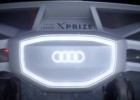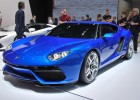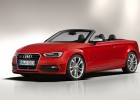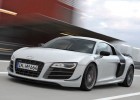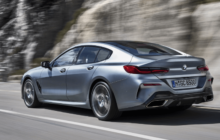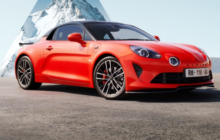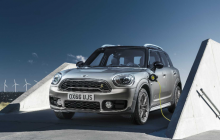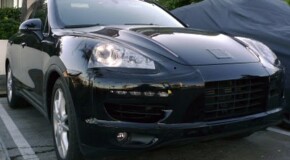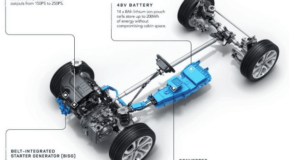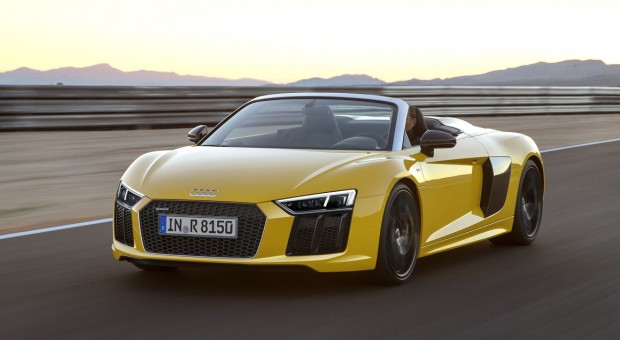
All-New Audi R8 Spyder V10
Spectacular design and breathtaking dynamism, combined with the allure of open-top driving – Audi presents the new Audi R8 Spyder
397 kW (540 hp), from 0 to 100 km/h (62.1 mph) in 3.6 seconds, top speed 318 km/h (197.6 mph) – the new Audi R8 Spyder* with V10 naturally aspirated engine merges impressive performance with the allure of open-top driving. Its striking design and high-end technologies demonstrate the concentrated expertise of the premium brand. Audi is unveiling its new open high-performance sports car
The new open-roof high-performance sports car opens another chapter in the Audi R8 success story. It all started in 2007 with the market introduction of the first-generation Coupé, followed by the Spyder in 2010. Sales of both versions combined reached nearly 27,000. They demonstrate the high-tech expertise of Audi and the brand’s affinity with motorsport. The brand restates this with the second R8 generation – its engineers developed the new Audi R8 Le Mans, a GT3 racing car, in parallel with the production models. As a result, almost 50 percent of all the parts used on the R8 LMS are also to be found in the R8. The success of the new Coupé is confirmed by prestigious awards bestowed on it last year, such as the “Golden Steering Wheel” and the “Auto Trophy”.
The R8 Spyder has a lightweight cloth hood tapering into two fins. These stretch the cloth so that it, along with the large hood compartment cover, harmonizes perfectly with the athletic design of this high-performance sports car. An electro-hydraulic drive opens and closes the hood in 20 seconds up to a speed of 50 km/h (31.1 mph). The rear window, sunk into the bulkhead, can be retracted and extended. With all windows up, the air stream strokes the body with a minimum of turbulence.
Dry, the two-seater weighs just 1,612 kilograms (3,553.9 lb). Its strong backbone is the newly developed Audi Space Frame (ASF) using the multi-material construction principle, made from aluminum and carbon fiber.
The aluminum components make up 79.6 percent of its weight. In a progression from the R8 Coupé, they form a lattice that Audi’s engineers have used to incorporate specific reinforcements especially into the sills, A-posts and windscreen frame. Innovative manufacturing methods lower the weight of individual components by up to ten percent. As a result, the highly rigid body weighs a mere 208 kilograms (458.6 lb), and its torsional rigidity has increased by over 50 percent compared with the previous model.
Horizontal lines at the front and rear emphasize the width of the R8 Spyder, as does the large, low-height Audi Singleframe with its radiator grille in honeycomb structure. Sculptural surfaces connect it to the wedge-shape headlights in each of which 37 light-emitting diodes generate bright LED light as standard. As a high-end option, Audi offers laser lighting for maximum visibility and range – identified by a blue anodized strip in the headlights that is additionally lit. This cutting-edge technology is combined with the dynamic indicator lights. At the rear, it is supplied as standard on all versions.
The new Audi R8 Spyder V10 impressively demonstrates the dynamic potential of lightweight automotive construction with a dry weight of 1,612 kilograms (3,553.9 lb). The power-to-weight ratio is just 3.19 kilograms (8.6 lb) per hp.
The key to this outstanding figure is the new Audi Space Frame (ASF) that uses the multi-material construction principle. As in the R8 Coupé*, it combines aluminum components with structurally integrated carbon fiber reinforced polymer. The aluminum components make up 79.6 percent of the multi-material ASF. In a progression from the Coupé version, they form a lattice that Audi’s engineers have used to incorporate specific reinforcements especially into the sills, A-posts and windscreen frame. Innovative manufacturing methods lower the weight of individual components by up to ten percent. Overall, the ASF in the new Audi
R8 Spyder weighs just 208 kilograms (458.6 lb); what is more, its torsional rigidity has increased by 50 percent compared with the previous model. It has achieved top marks for acoustics and crash safety, too. The underbody has a smooth trim, to improve the aerodynamics. And at the rear, a large diffuser increases the downforce – two more solutions taken directly from motorsport.
With its precise throttle response, free-revving ability all the way up to 7,800 rpm and stunning sound, the ten-cylinder engine guarantees goosebumps. From its 5,204 cm3 displacement, it develops a power of 397 kW (540 hp) and a torque of 540 Nm (398.3 lb-ft) at 6,500 rpm. Along with direct injection into the combustion chambers (FSI), the V10 adds fuel injection into the induction manifold (MPI). The result is captivating performance: The new Audi R8 Spyder V10 accelerates from 0 to 100 km/h (62.1 mph) in 3.6 seconds. It races from a standstill to 200 km/h (124.3 mph) in 11.8 seconds. The speedometer needle only stops rising at 318 km/h (197.6 mph). The snarl and roar of the V10 become more full-throated and passionate as the revs rise. Exhaust flaps are standard; the optional sport exhaust system with gloss black tailpipe trims gives the sound added edge.
Compared with the previous model, NEDC fuel consumption has been cut by ten percent – thanks to efficiency technologies such as cylinder on demand (COD), the dual injection system and the freewheeling mode in the seven-speed S tronic dual-clutch transmission: when the driver takes their foot off the accelerator pedal at speeds over 55 km/h (34.2 mph), the engine is decoupled from the drivetrain – the new Audi R8 Spyder then coasts. It consumes on average 11.7 liters of fuel per 100 kilometers (20.1 US mpg) which corresponds to 277 grams CO2 per kilometer (445.8 g/mi).
Fuel consumption of the models named above:
Audi R8 Spyder V10:
Combined fuel consumption in l/100 km: 11.7 (20.1 US mpg);
Combined CO2 emissions in g/km: 277 (445.8 g/mi)
Audi R8 Coupé V10:
Combined fuel consumption in l/100 km: 11.4 (20.6 US mpg);
Combined CO2 emissions in g/km: 272 (437.7 g/mi)
Audi R8 Coupé V10 plus:
Combined fuel consumption in l/100 km: 12.3 (19.1 US mpg);
Combined CO2 emissions in g/km: 287 (461.9 g/mi)
Behind the V10 there is a seven-speed S tronic with lighting-fast action, which the driver controls electrically – by wire. The dual-clutch transmission directs forces to a newly designed quattro drive system with an electro-hydraulically activated multi-plate clutch at the front axle. The all-wheel clutch, watercooled for maximum performance, distributes the drive torques fully variably according to the driving situation – in extreme cases, up to 100 percent to the front or rear wheels. The intelligent control system is incorporated into the Audi drive select system, which offers four modes ranging from overtly dynamic to comfort-oriented. In conjunction with the optional R8 performance leather steering wheel, three more driving programs are available: dry, wet and snow. They make handling even more precise and stable, to match the specific conditions of the road being traveled.
The controls place the focus squarely on the driver, who can operate all important functions with the multifunction and satellite push-buttons without having to take their hands off the steering wheel or look away from the road. The large 12.3-inch, fully digital Audi virtual cockpit presents all information using rich 3D graphics – if desired, in a special performance view that includes driving dynamics information. The intuitively operated MMI navigation plus with MMI touch is standard, as are belt microphones. These make it even easier to use natural-language voice control and the phone. MMI search, which makes search suggestions after input of just the first few letters, offers a shortcut to the required information
Source: Audi Europe


